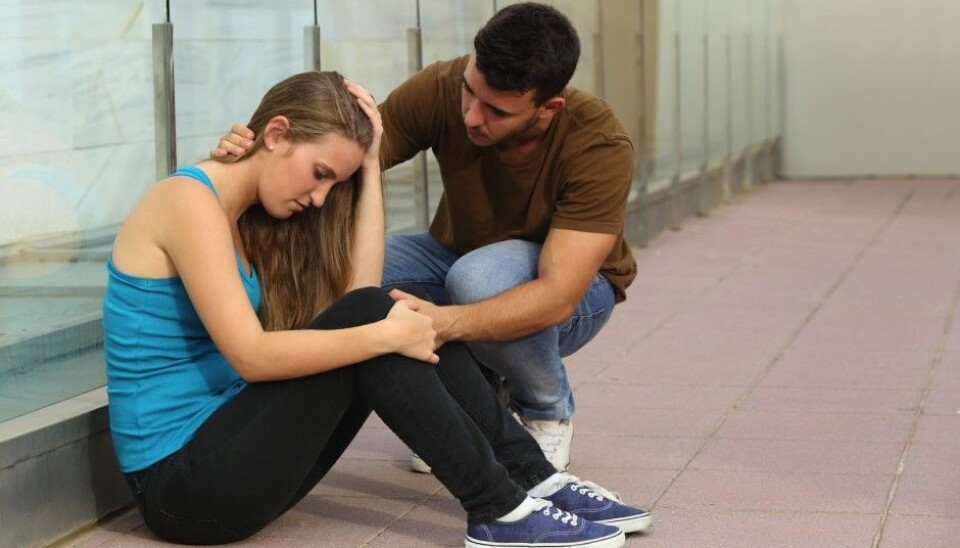An article from Norwegian SciTech News at NTNU

Three out of four institutionalized children are severely mentally ill
A new report reveals that 76 percent of children and adolescents who live in Norwegian child welfare institutions have serious psychiatric diagnoses. Only 38 percent report that they receive appropriate psychiatric help.
Denne artikkelen er over ti år gammel og kan inneholde utdatert informasjon.
The mental health of 400 Norwegian children and adolescents was surveyed for the report “Mental health of children and young people in child welfare institutions” that was published today.
A large team of researchers from NTNU carried out this study, led by Associate Professor Nanna Sønnichsen Kayed of The Regional Centre for Child and Youth Mental Health and Child Welfare (RKBU) at NTNU.
The children and adolescents surveyed range in age from 12-20 years old, and live in welfare institutions scattered throughout the country. All the children and teenagers were personally interviewed over a period of three years.
This is the first time such a survey has been undertaken in Norway.
Few get the help they need
The conclusion of the researchers is that the condition of these children and adolescents is critical. Fully 76 percent are severely ill with psychiatric diagnoses. In comparison, only five to ten percent of children in the general population will ever get a psychiatric diagnosis.
“The gap is alarmingly large,” says Kayed.
A large gap also exists between how many people are sick and how many get help for what they are struggling with. During the three months preceding the survey, 38 percent of the surveyed participants received psychiatric help.
Failed by both parents and the public health system
“These are our most vulnerable kids. They’re struggling with complex difficulties. They have experienced neglect, maltreatment and trauma to a much greater degree than children in the general population. They are in state care. They are very sick, and too many of them don’t get the help they need,” says Kayed.
Their most frequent diagnoses are anxiety, chronic or severe depression, ADHD, severe behavioural problems and attachment disorders.
The report also reveals that many of the children and adolescents have multiple psychiatric diagnoses simultaneously, including 23 percent who meet the criteria for high-functioning autism. Of this group, 17 percent also had a severe behavioural disorder.
Another 26 percent have a behaviour disorder or a substance abuse problem, of which 72 percent have another diagnosis as well.
Left home at twelve years old
“These children and young people are in sad situations on many fronts. They may be afraid to go outside or be tearful all the time. Or they can’t get out of bed in the morning, or don’t dare to love someone. Or maybe they don’t know how to speak without shouting, or how they should fight the urge to hit, get high or run away,” says Kayed.
On average, children and adolescents were 12-1/2 years old when they were removed from their homes by Norwegian child welfare services for the first time. At the time of the survey, the participants averaged 16-1/2 years old and had moved a little over three times under the direction of the child welfare service. One teenager reported having been moved 25 times, and 14 percent of the adolescents had had more than five relocations.
Short-term thinking creates problems
Kayed believes children are let down by the government for several reasons.
“Child welfare services follow professional guidelines for short institutional placements, because the starting point in cases is for children to return to their parents or guardians as quickly as possible. This may in itself lead to many moves and relationship disruptions. We see the same trend in health care, with requirements for efficiency and short-term treatment. A more complete and long-term perspective gets lost,” says Kayed.
She points out that many of those who work in child welfare institutions are not educated or trained to see and understand mental illness, or to treat it.
Falling between the cracks
“The staff are mostly educated as milieu-therapists. They are good at providing care, establishing a positive social environment and setting limits. Children with psychiatric diagnoses need much more than that, and they need both milieu-therapy and psychiatric help,” says Kayed.
She believes that a more thorough survey of children when they are placed into state care must be established.
“It is important to know the children’s strengths, what they are struggling with and what treatment they need. These children are falling between the cracks because child welfare and health care fall under different government ministries and agencies. This division of services yields poor results for the children and adolescents living in child welfare institutions. They are not receiving the health care they need for their mental illness struggles,” says Kayed.
She and her research team believe that the report clarifies the need for a reassessment of how the health care and child welfare sectors are organized.
“Now I hope that the government takes up its responsibilities so that youngsters get the help they need,” says Kayed.
Should have greater ambitions
The report was presented on the morning of 23 March 2015. Attending the presentation were Mari Trommald, Director of Children, Youth and Family Affairs, Solveig Horne, Minister of Children, Equality and Social Inclusion and State Secretary Cecilie Brein-Karlsen of the Ministry of Health and Care Services.
In a press release, Trommald says that they take the results seriously.
“We must put even more pressure on the work already started in collaboration with the Norwegian Directorate of Health. The state has intervened in and taken responsibility for the lives of the children placed in our child welfare institutions. These children are vulnerable, and often bear the burden of traumatic experiences. That these children are receiving insufficient treatment for their mental illness when they are in state custody is a very serious issue. We should have great ambitions on behalf of these children when it comes to health,” says Trommald.
In the same press release, Cecilie Daae, Deputy Director in the Directorate of Health, says children and adolescents must be identified and have access to the proper social and health care services as early as possible.
“However, that’s not to say that the right treatment for all disorders is specialized treatment. This must be assessed individually. General practitioners will often be those who can ensure long-term follow-up in cooperation with other primary health care providers and specialists. Going forward, it will be important to see if we need to establish new or different kinds of services for some of these children and adolescents,” says Daae.
--------------------
Read the Norwegian version of this article at gemini.no

































